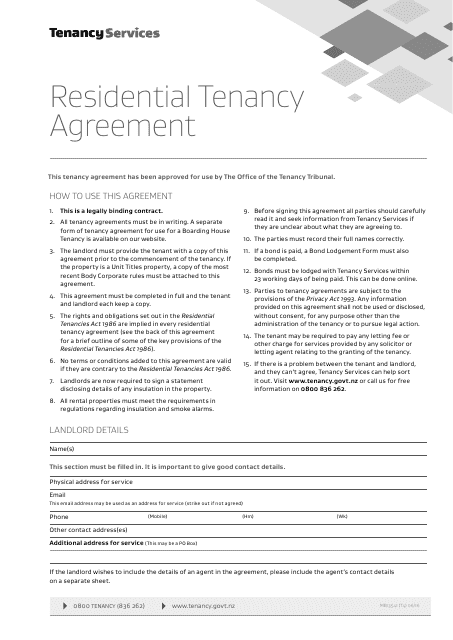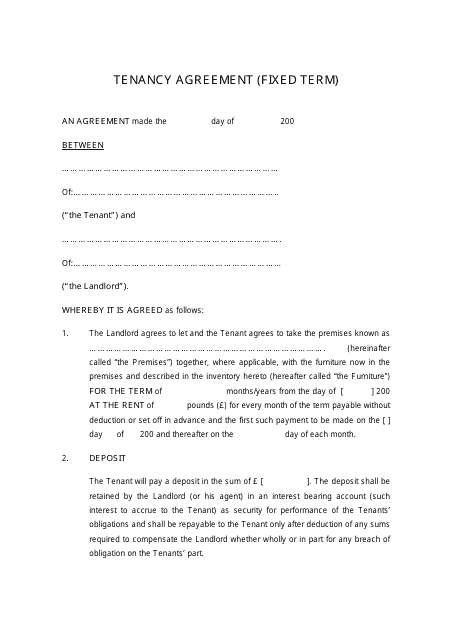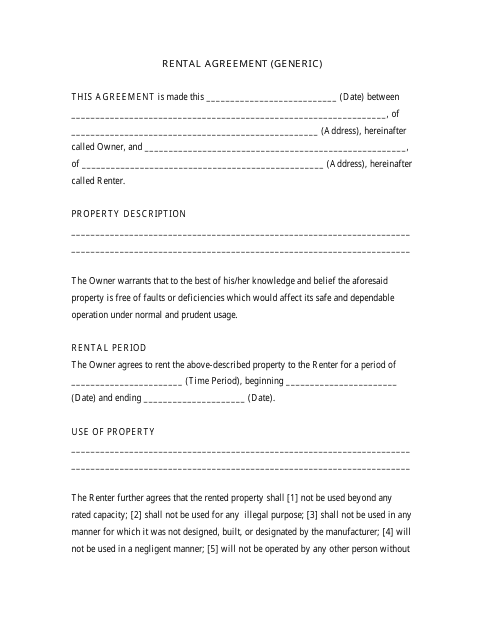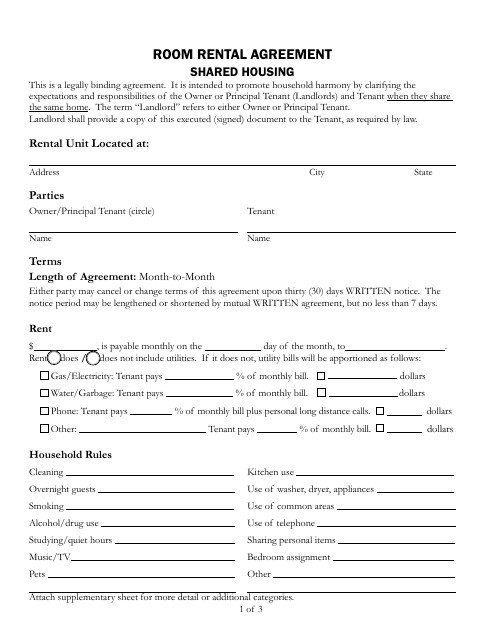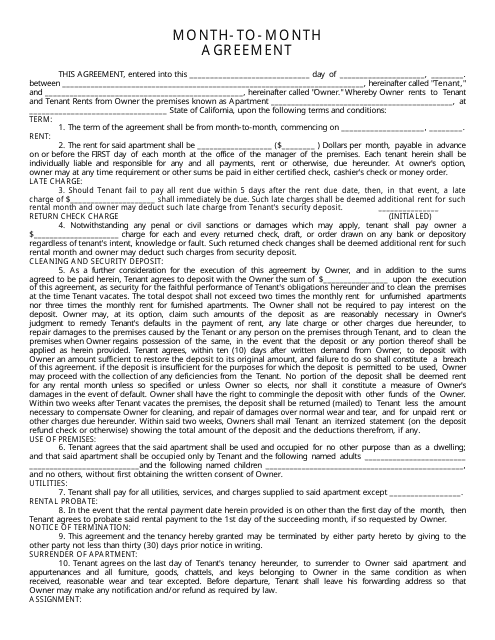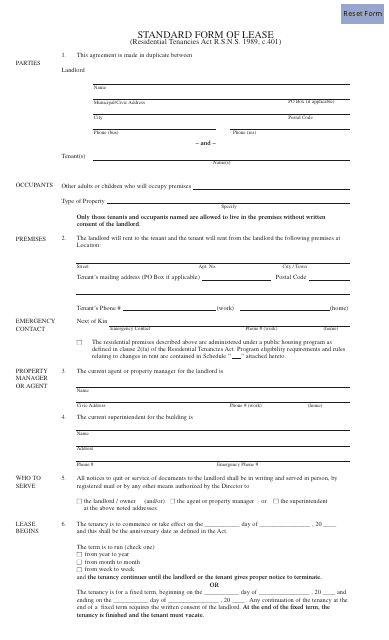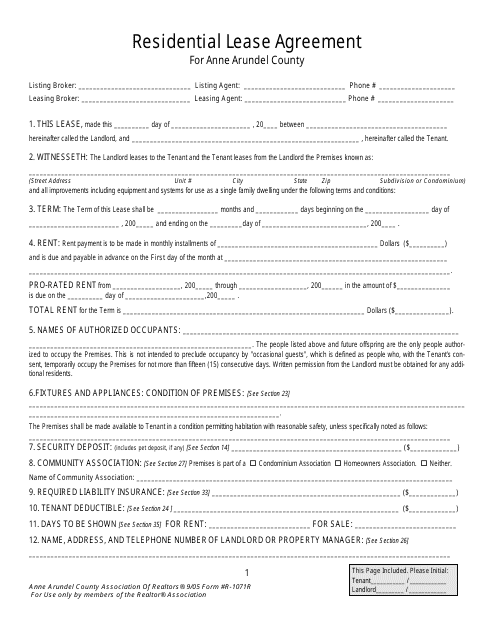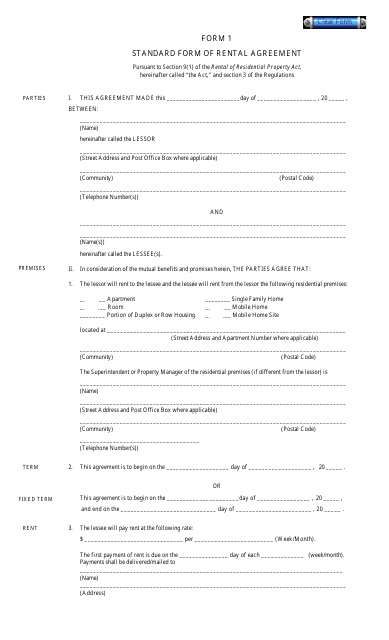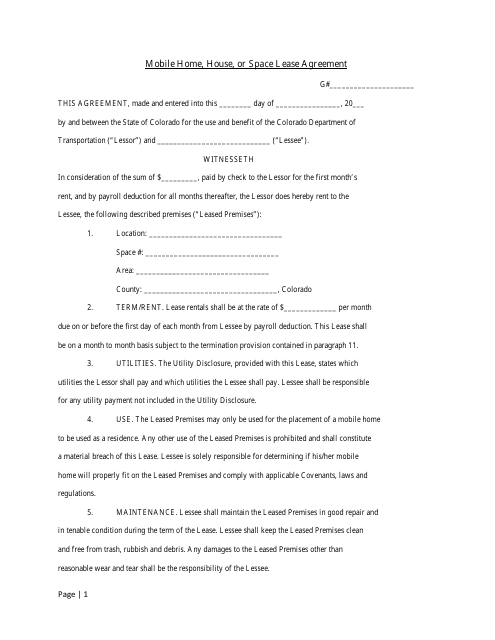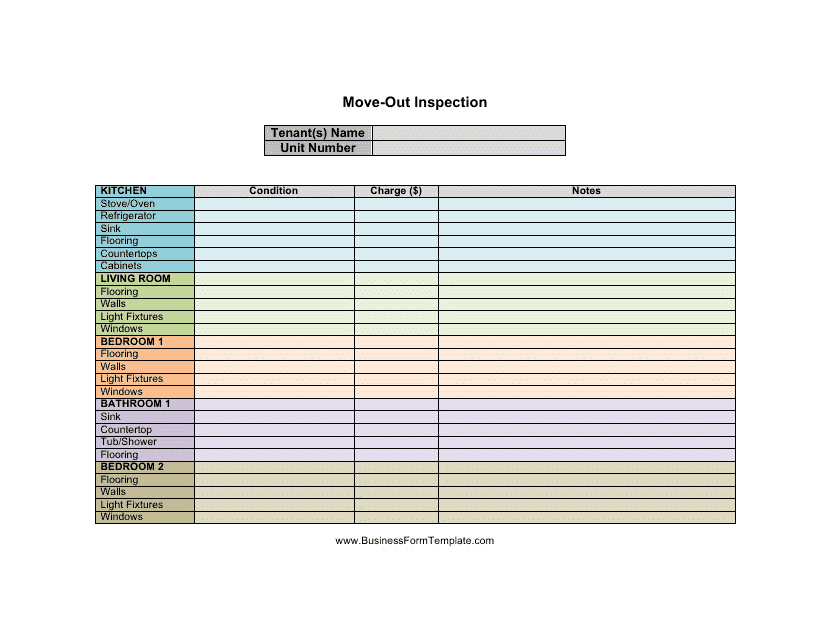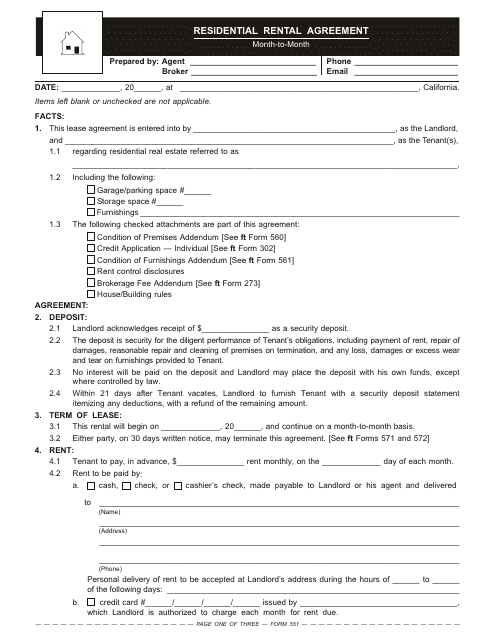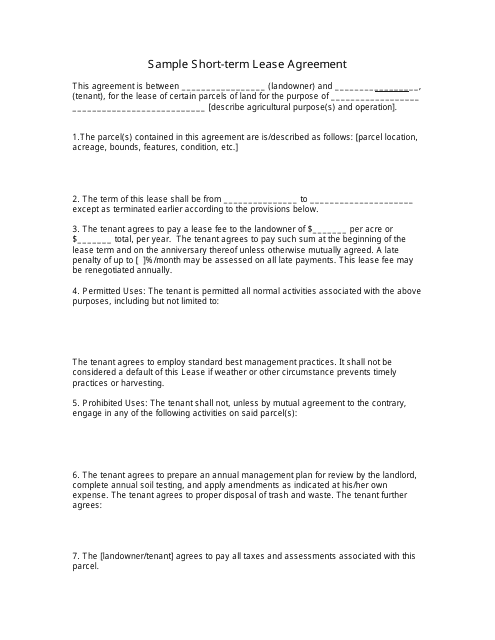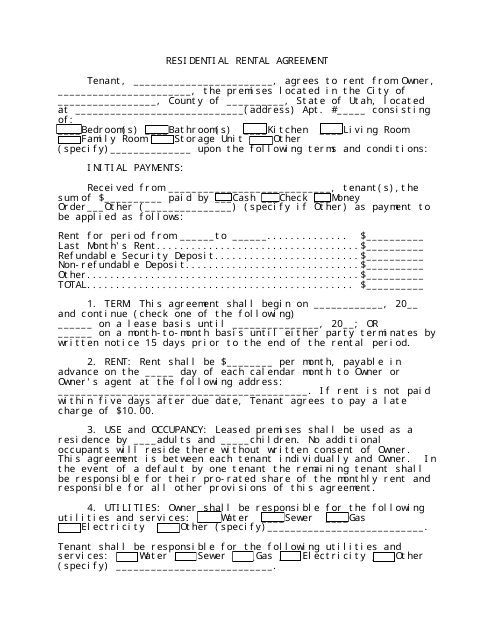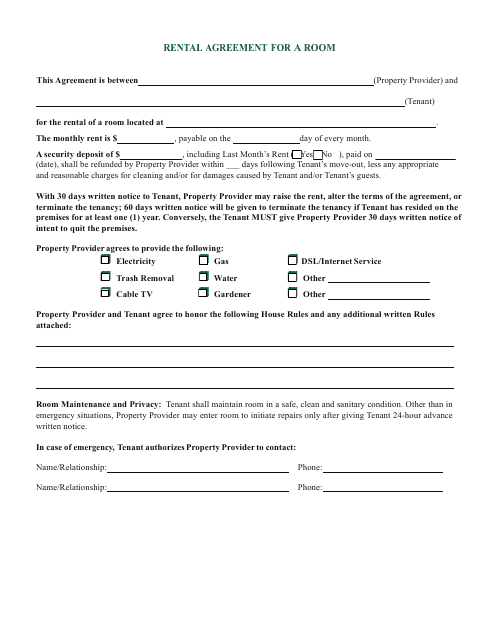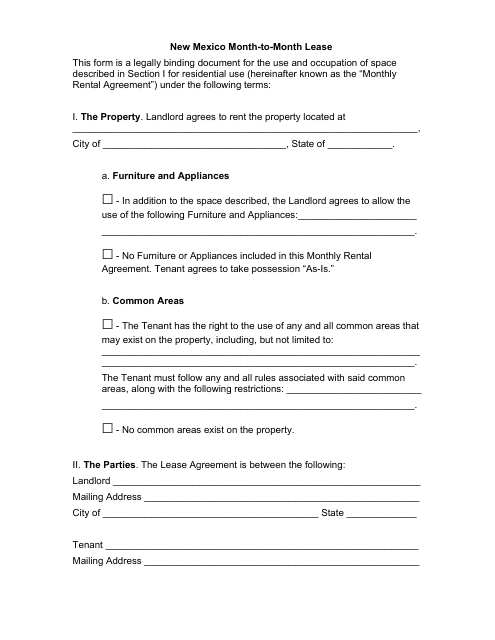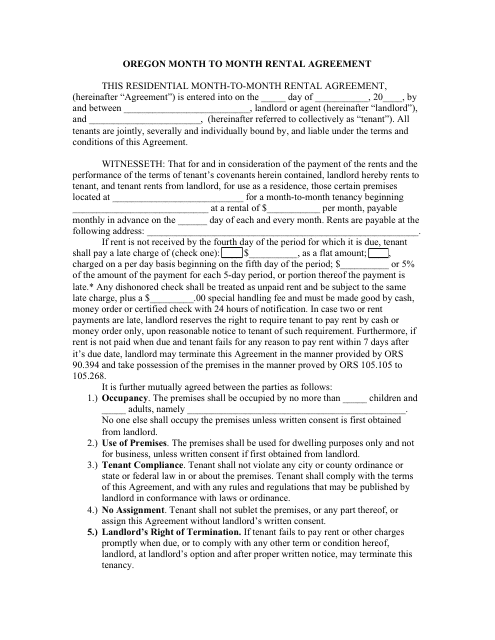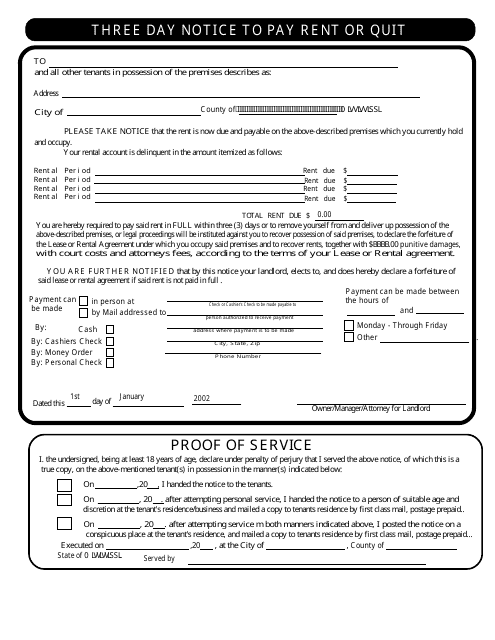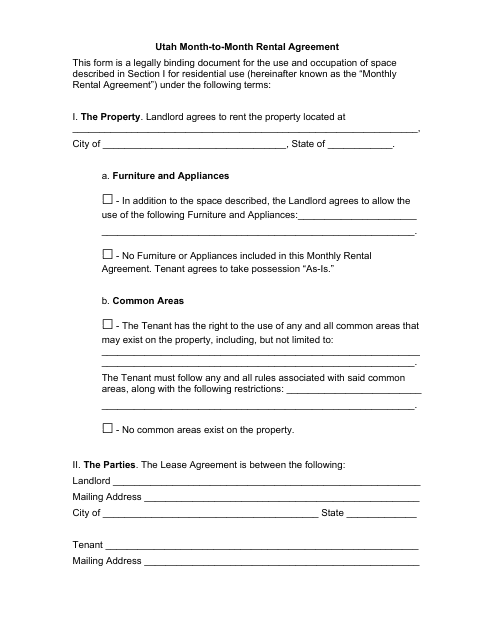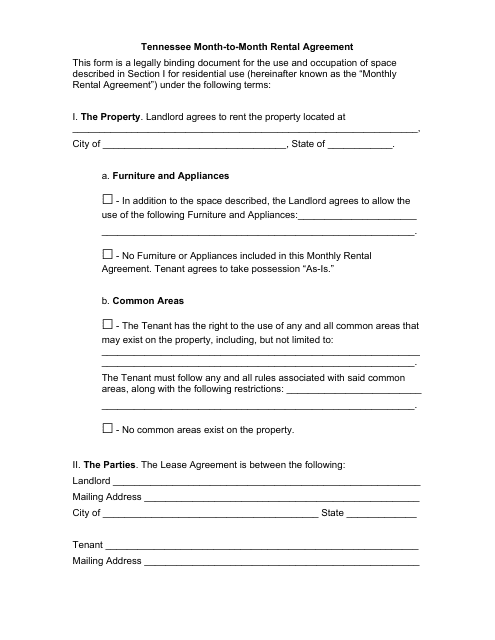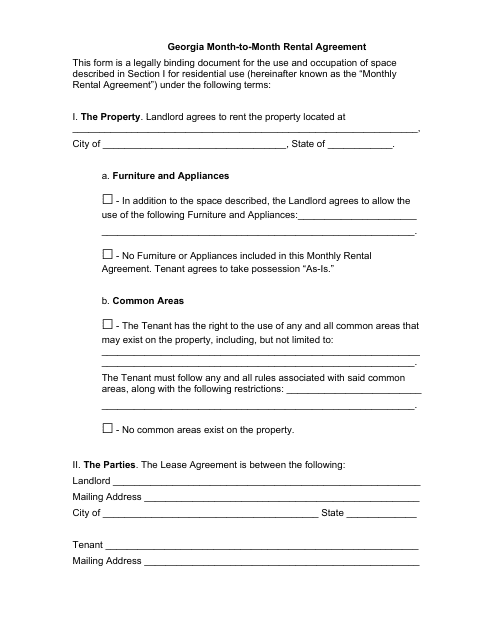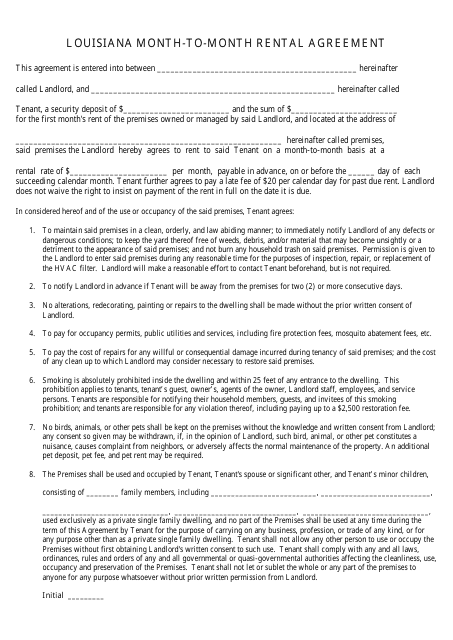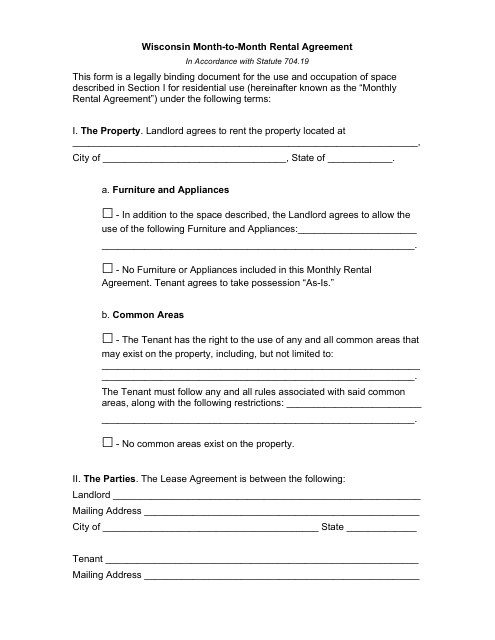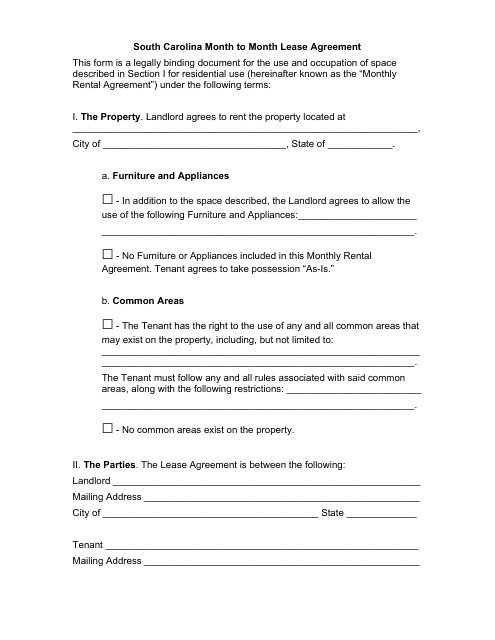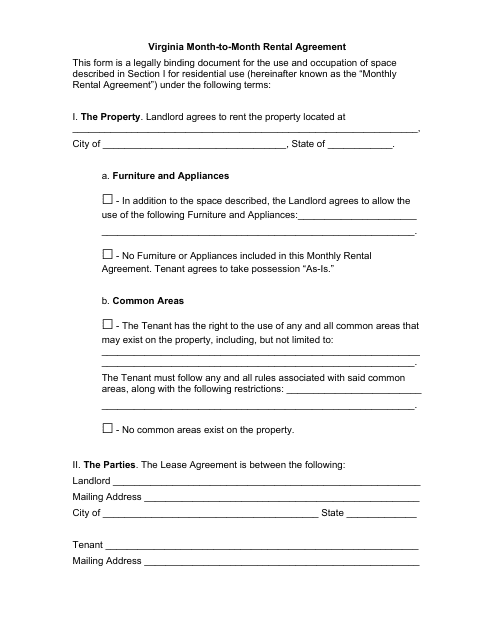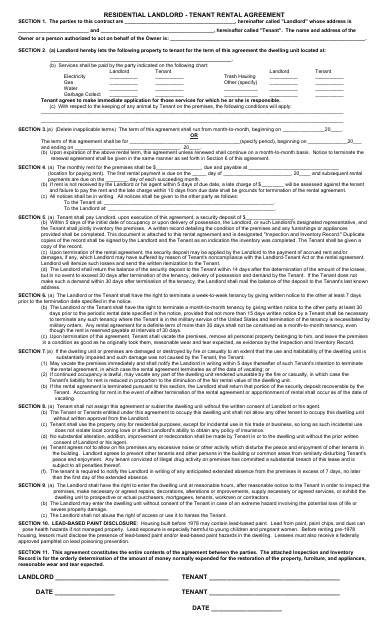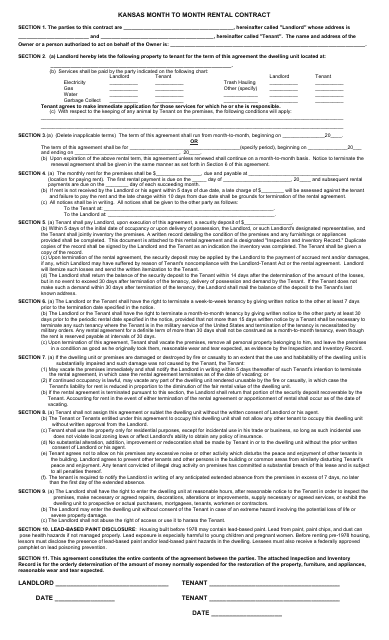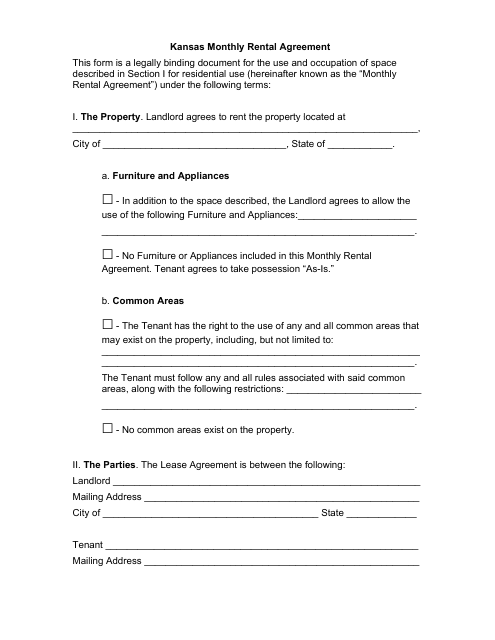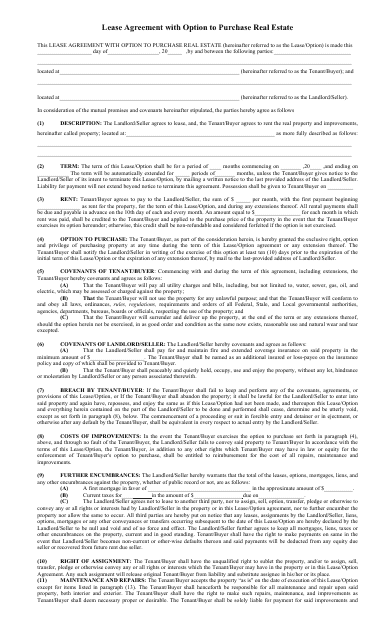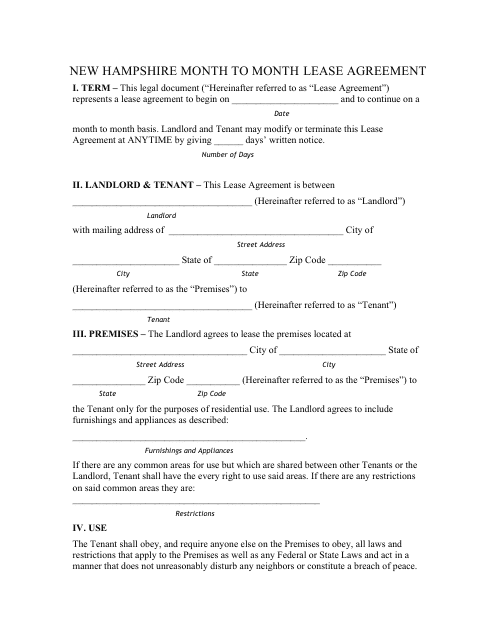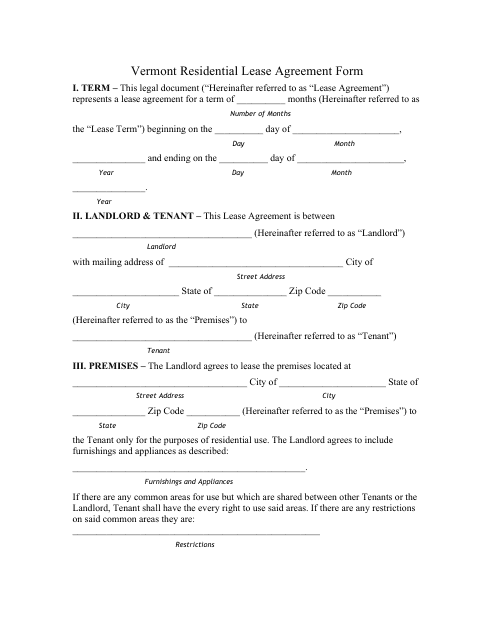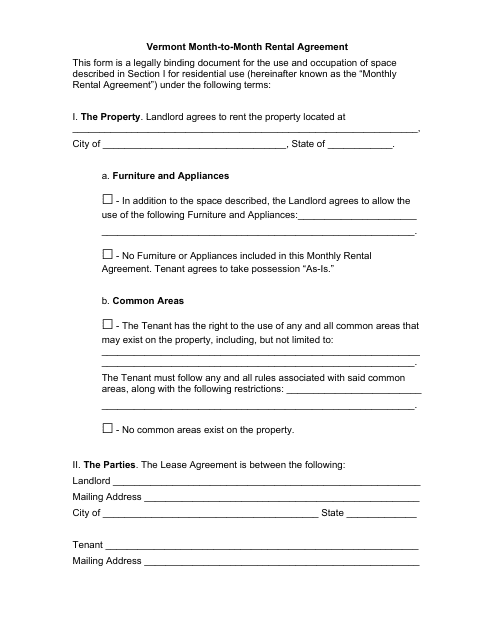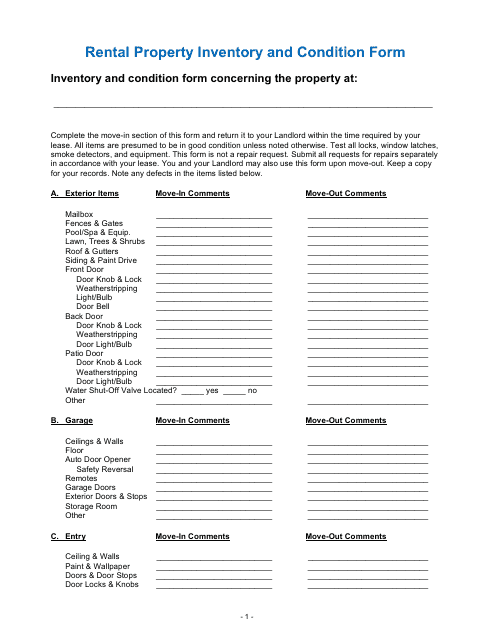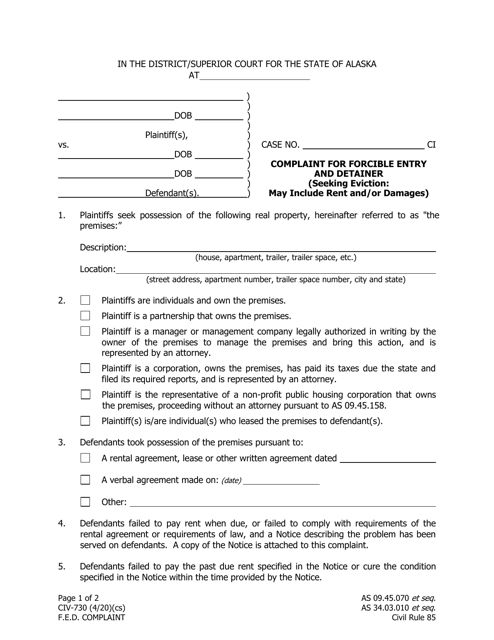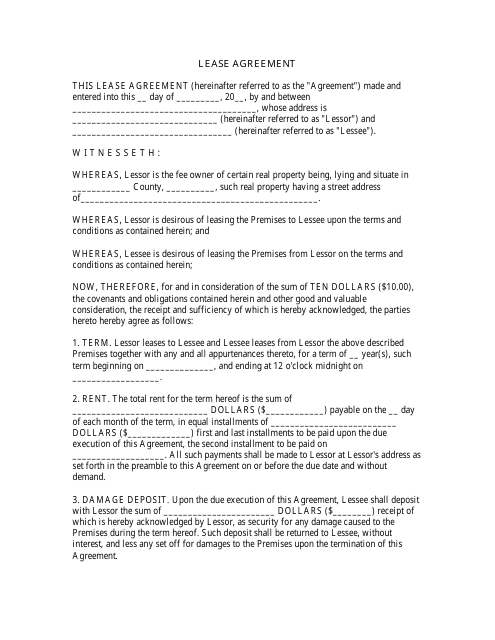Residential Lease Agreement Templates by State
What Is a Residential Lease Agreement?
A Residential Lease Agreement - commonly confused with a Residential Rental Agreement - is a legal document used when leasing a house, an apartment, or other types of residential property. The contract states the conditions and rules of the transaction and the responsibilities of both participating parties - the landlord and the tenant.
Alternate Name:
- Residential Lease Contract.
This document is necessary for both the landlord and tenant in case any issues occur in the future. It is better to have a written lease with all terms and conditions of the rental even if the landlord and tenant are relatives or friends. The terms and disclosures required in a lease usually differ from state to state. Be sure to look up the laws of the state and county where the property is located before continuing with the agreement.
Download a standard ready-made agreement by browsing the links below or make your own Residential Lease Agreement with our online form-builder.
A basic agreement must include the information about the rental property, the agreed-upon amounts of the rent payments, details about the security deposit, the pet policy, etc. All of these specifics are included to protect the interests of both the landlord and tenant and disclose the expectations of each party to the other. Basic residential lease agreement templates list the more commonly used clauses. Any additional terms of the contract must be negotiated by the landlord and tenant. After both parties deem the contract to be suitable, the form is filled out, printed, and signed with separate copies kept by each of the parties.
Is There a Difference Between a Lease Agreement and a Rental Agreement?
A lease is a long-term arrangement that covers the renting of property over a period of 12 or more months. Shorter-term leases are documented using Rental Agreements that are usually renewed on a month-to-month basis. Both documents must cover everything that both parties need in order to ensure safe landlord-tenant relations.
How to Use a Residential Lease Agreement?
Any Lease Agreement for a house is used to help the participating parties set forth all the obligations and conditions of the lease and to manage any disputes that may arise in the future. The contract is usually drafted by the landlord with all of the basic information - such as names, addresses, and dates - already specified within.
The landlord may also set specific clauses regarding what a tenant can and cannot do. This may include rules concerning pet ownership, remodeling the property, sublet the premises, etc. The agreement must also feature detailed clauses on any possible violations of the lease. These include penalties for violating house rules, withholding rent payments, or doing damage to the property.
Not what you were looking for? Check out these related tags and topics:
Related Articles
Documents:
281
This form is used for creating a legally binding agreement between a landlord and a tenant for a residential property in New Zealand.
This document is a template for a fixed-term tenancy agreement in the United Kingdom. It outlines the terms and conditions of the rental agreement between a landlord and a tenant.
This document is a generic template for a rental agreement. It can be used to outline the terms and conditions of a rental agreement between a landlord and a tenant.
This document is a Room Rental Agreement Form specifically designed for shared housing in the County of Santa Cruz, California. It outlines the terms and conditions of renting a room in a shared living arrangement.
This document is a Month-To-Month Agreement Form specific to the state of California. It outlines the terms and conditions of a rental agreement that can be renewed on a monthly basis.
This form is used for creating a legally binding agreement between a landlord and tenant for the monthly lease of a property in Colorado.
This form is used for renting a room in a dwelling in Montgomery County, Maryland. It ensures clear terms and agreements between the landlord and the tenant.
This Form is used for residential lease agreements in New Brunswick, Canada. It is the standard form of lease that outlines the terms and conditions between a landlord and a tenant.
This document is a standard form of lease that outlines the terms and conditions of a rental agreement between a landlord and a tenant. It typically covers details such as rent amount, lease duration, and responsibilities of both parties.
This document is a template for a house lease agreement provided by E-Renter. It can be used by landlords and tenants to establish the terms and conditions of renting a house.
This Form is used for creating a residential lease agreement in Anne Arundel County, Maryland.
This document is used for establishing a legal agreement between a landlord and tenant for the rental of a property. It outlines the terms and conditions of the rental, including rent amount, lease duration, and any rules or regulations.
This Form is used for leasing a mobile home, house, or space in Colorado. It ensures that both the landlord and tenant understand and agree to the terms and conditions of the lease.
This Form is used for documenting the condition of a rental property at the time of move-out, allowing both the landlord and tenant to assess any damages or issues.
This document is a Month-To-Month Residential Rental Agreement form specific to California. It outlines the terms and conditions for renting a residential property on a month-to-month basis.
This type of document is used for creating a temporary lease agreement between a landlord and a tenant. It outlines the terms and conditions of the lease for a short period of time.
This document is a template for a residential rental agreement in Utah. It includes twenty-five key points that should be covered in the agreement.
This document is used for creating a legal agreement between a landlord and tenant for renting a room in a residential property.
This document is a template for a month-to-month lease agreement in New Mexico.
This document is a template for a month-to-month rental agreement in Oregon. It outlines the terms and conditions for renting a property on a month-to-month basis.
This three-day notice to pay rent or quit may be used in Mississippi, USA. This is an official form that requires to pay rent within three days or vacate premisses.
This document is a template for a month-to-month rental agreement in Utah.
This document is a template for a month-to-month rental agreement in the state of Missouri. It outlines the terms and conditions of renting a property on a month-to-month basis.
This document is a template for a month-to-month rental agreement in Tennessee. It outlines the terms and conditions for renting a property on a monthly basis.
This document is a template for a month-to-month rental agreement in Georgia, United States. It is used to establish the terms and conditions of the rental agreement for a property on a month-to-month basis.
This document is a template for creating a month-to-month rental agreement in Louisiana. It outlines the terms and conditions of the rental agreement between the landlord and the tenant.
This document is a template for a month-to-month rental agreement in the state of Wisconsin. It provides a legal agreement between a landlord and tenant and outlines the terms and conditions of the rental arrangement.
This document is a template for a month-to-month lease agreement in South Carolina. It is used to outline the terms and conditions for renting a property on a month-by-month basis.
This document is a template for a month-to-month rental agreement in Virginia. It outlines nineteen key points that must be included in the agreement. Use this document when renting a property on a monthly basis in Virginia.
This document is a template for a residential landlord to use when creating a rental agreement with a tenant. It outlines the terms and conditions of the rental arrangement, including rent payment, duration of stay, and any other specific rules or regulations.
This document is a template for a month-to-month rental contract in Kansas. It outlines the terms and conditions of the rental agreement between a landlord and a tenant, including rent payment, duration, and responsibilities of both parties.
This document is a template for a monthly rental agreement in the state of Kansas. It provides a format for landlords and tenants to outline the terms and conditions of the rental agreement.
This document is a Lease Agreement that includes an option for the tenant to purchase the property in the future.
This document is a template for a month-to-month lease agreement in the state of New Hampshire. It is used when a landlord and tenant want to have a rental arrangement that can be terminated or renewed on a monthly basis.
This document is a template for a month-to-month lease agreement in New Mexico. It includes twenty one points that outline the terms and conditions of the rental agreement.
This document is used for creating a legal agreement between a landlord and tenant in Vermont for the rental of a residential property. It outlines the terms and conditions of the lease, including rent amount, lease duration, and responsibilities of both parties.
This document is a template for a month-to-month rental agreement in the state of Vermont. It outlines the terms and conditions of the rental agreement between the landlord and tenant on a month-to-month basis.
This document is used for keeping track of the inventory and condition of a rental property. It helps landlords and tenants document the existing items and their condition, protecting both parties in case of disputes or damages.
This type of document is a template that can be used to create a lease agreement. It helps outline the terms and conditions between a landlord and a tenant for renting a property.

